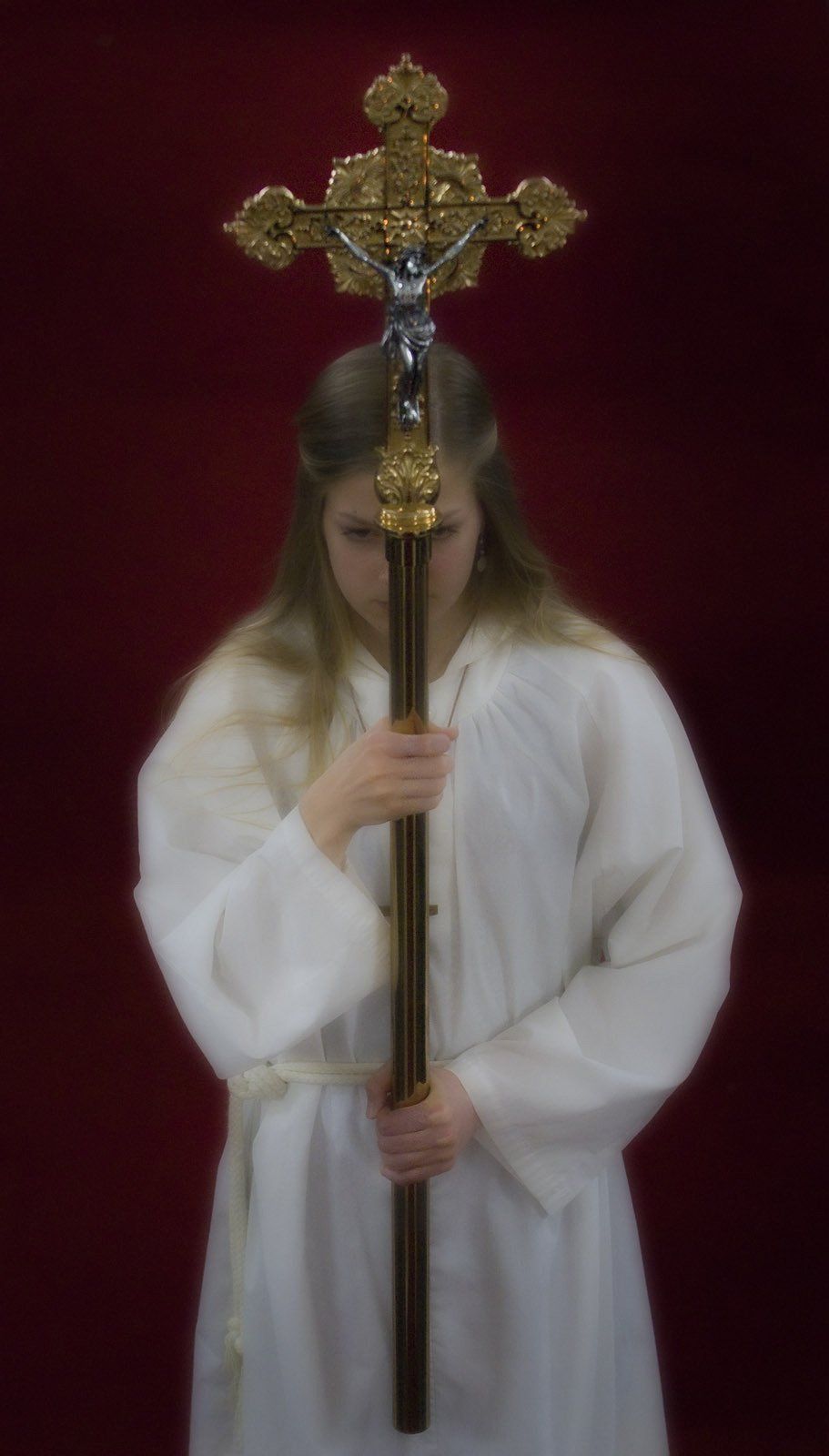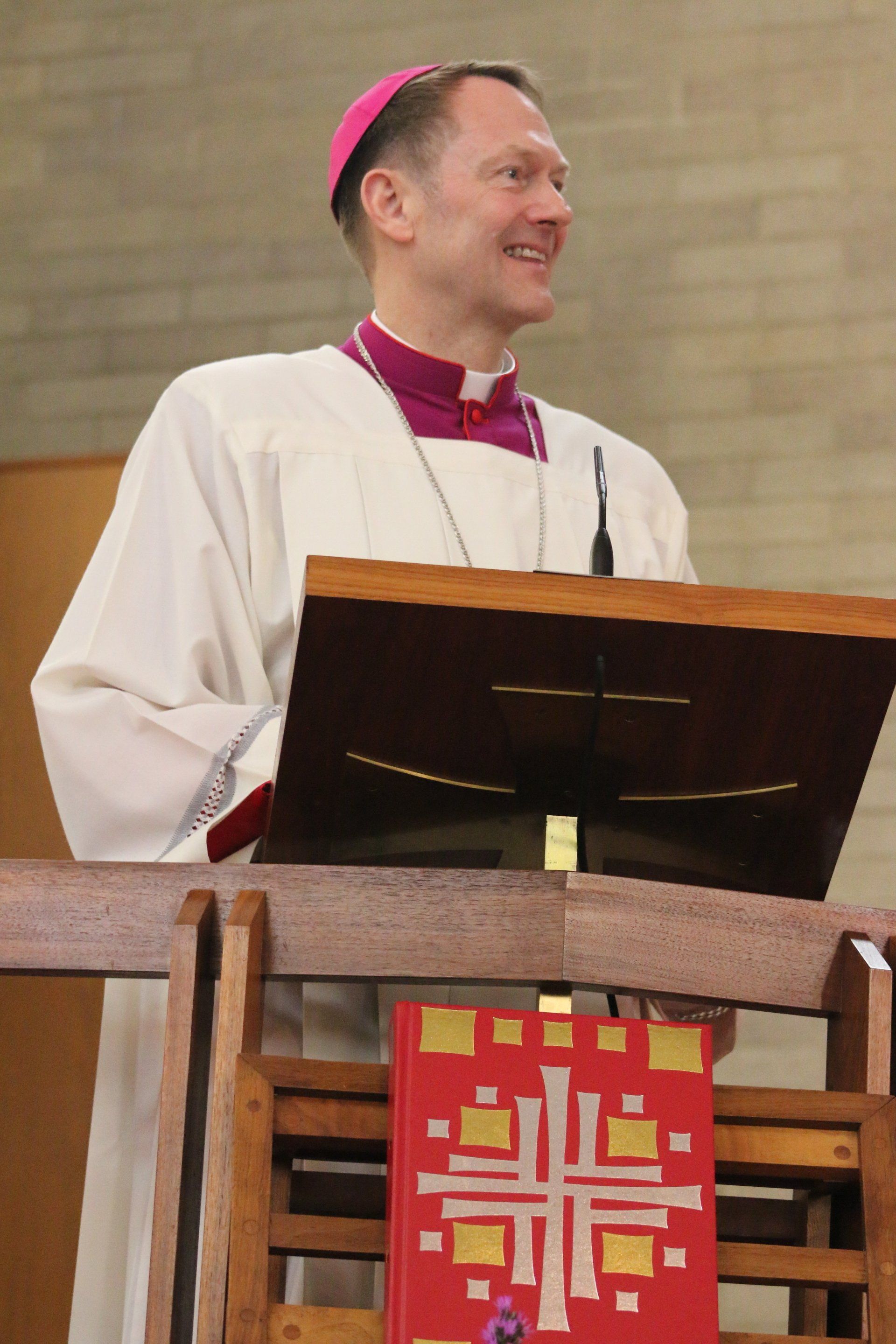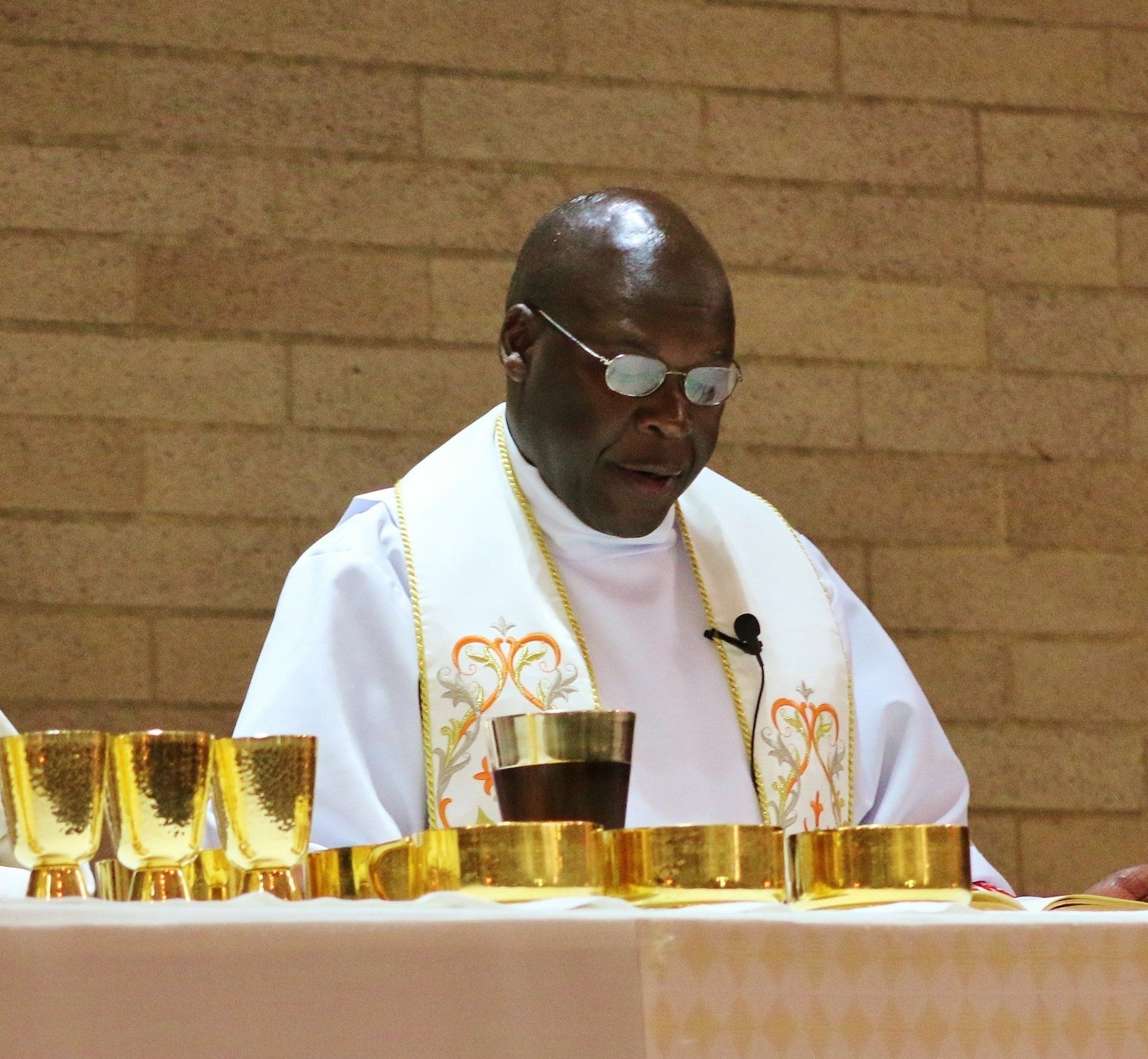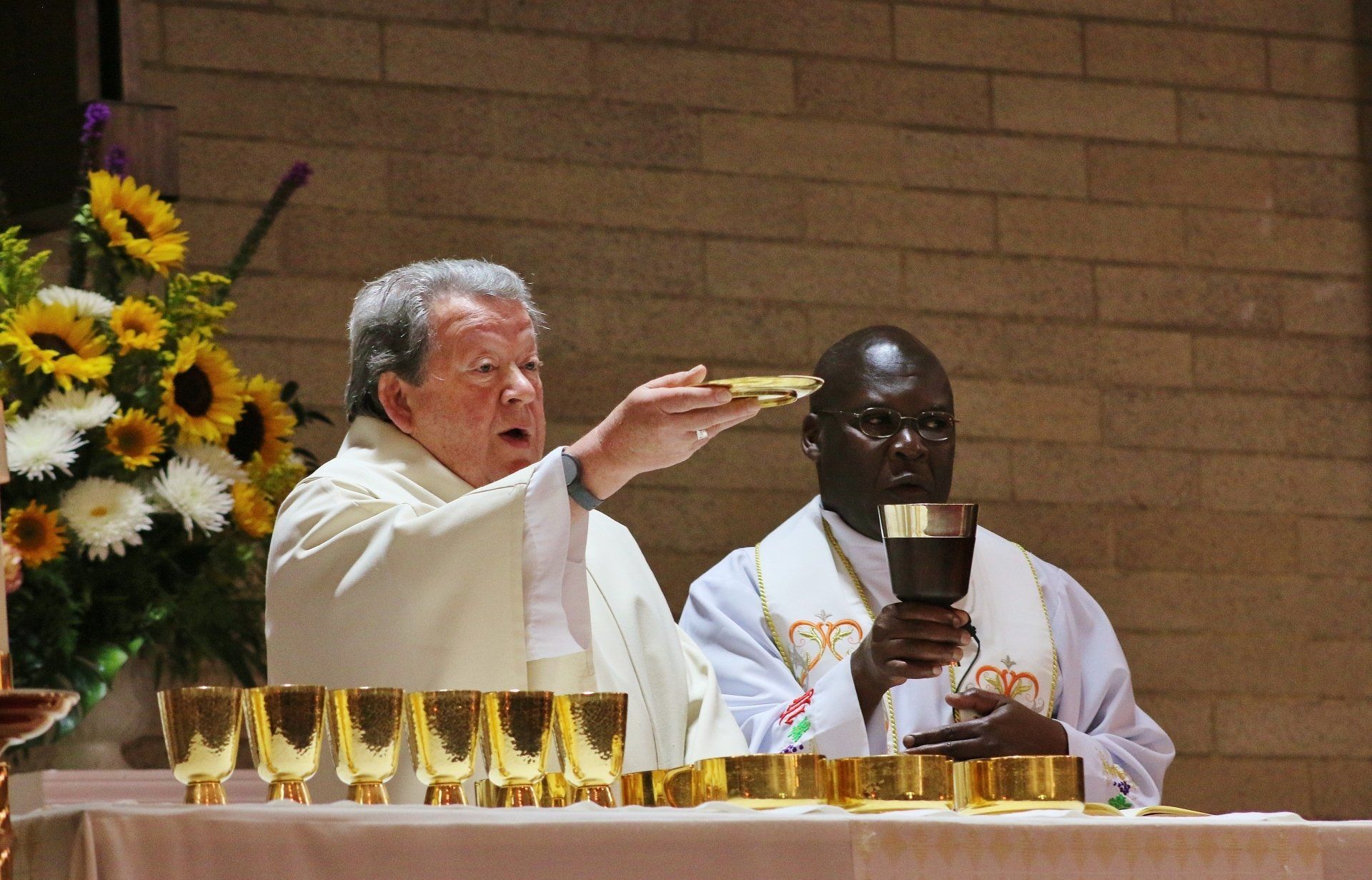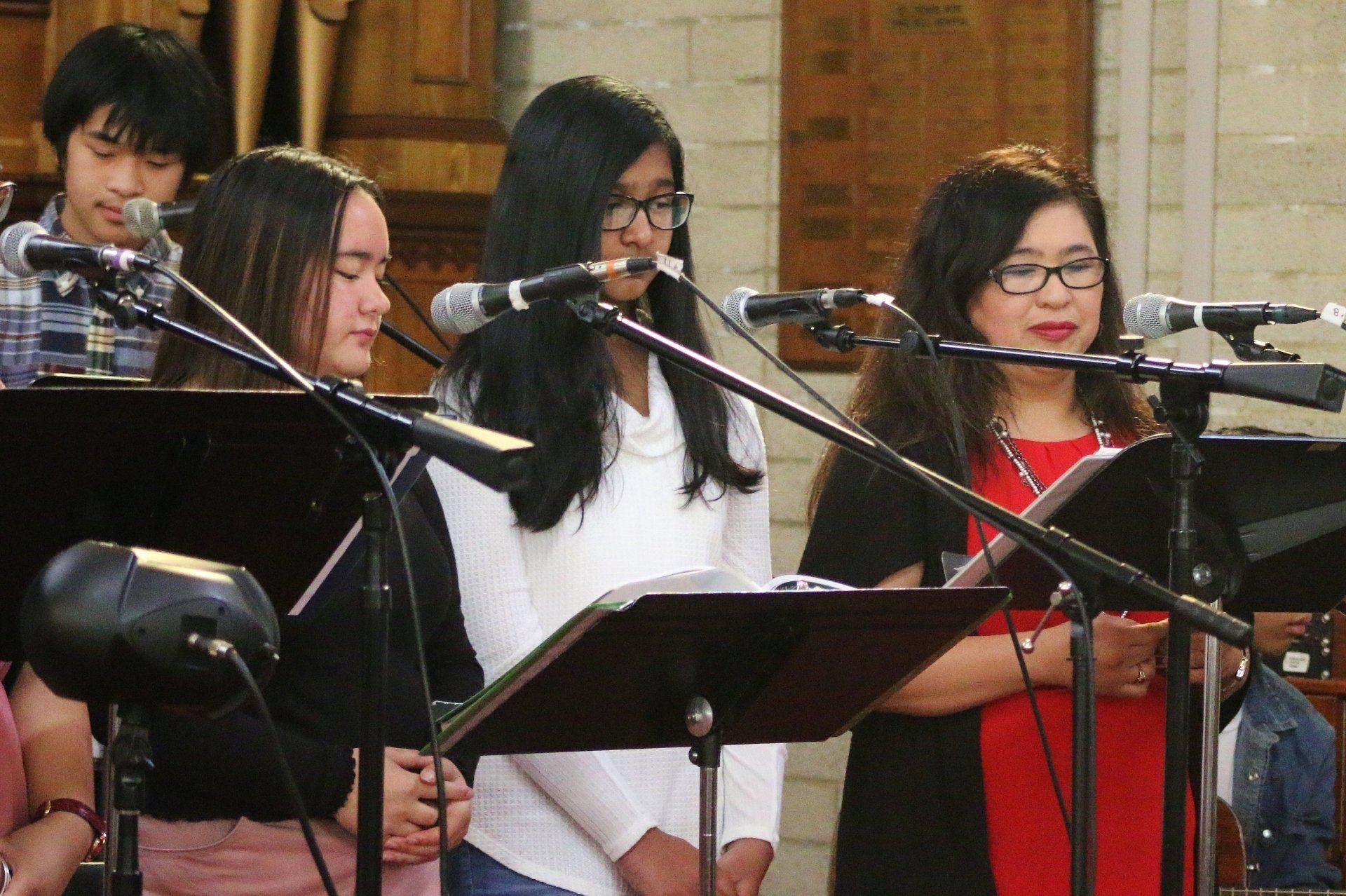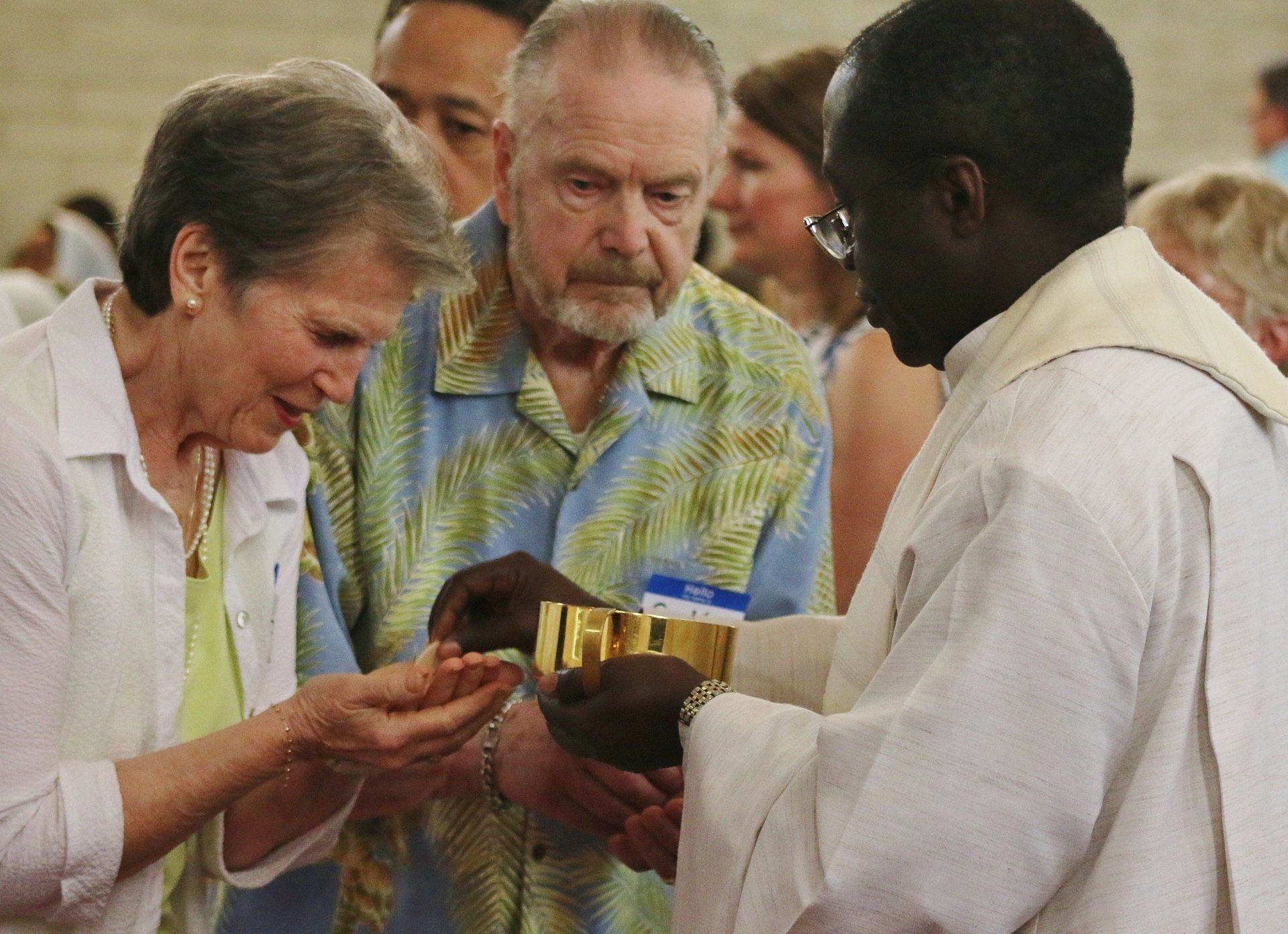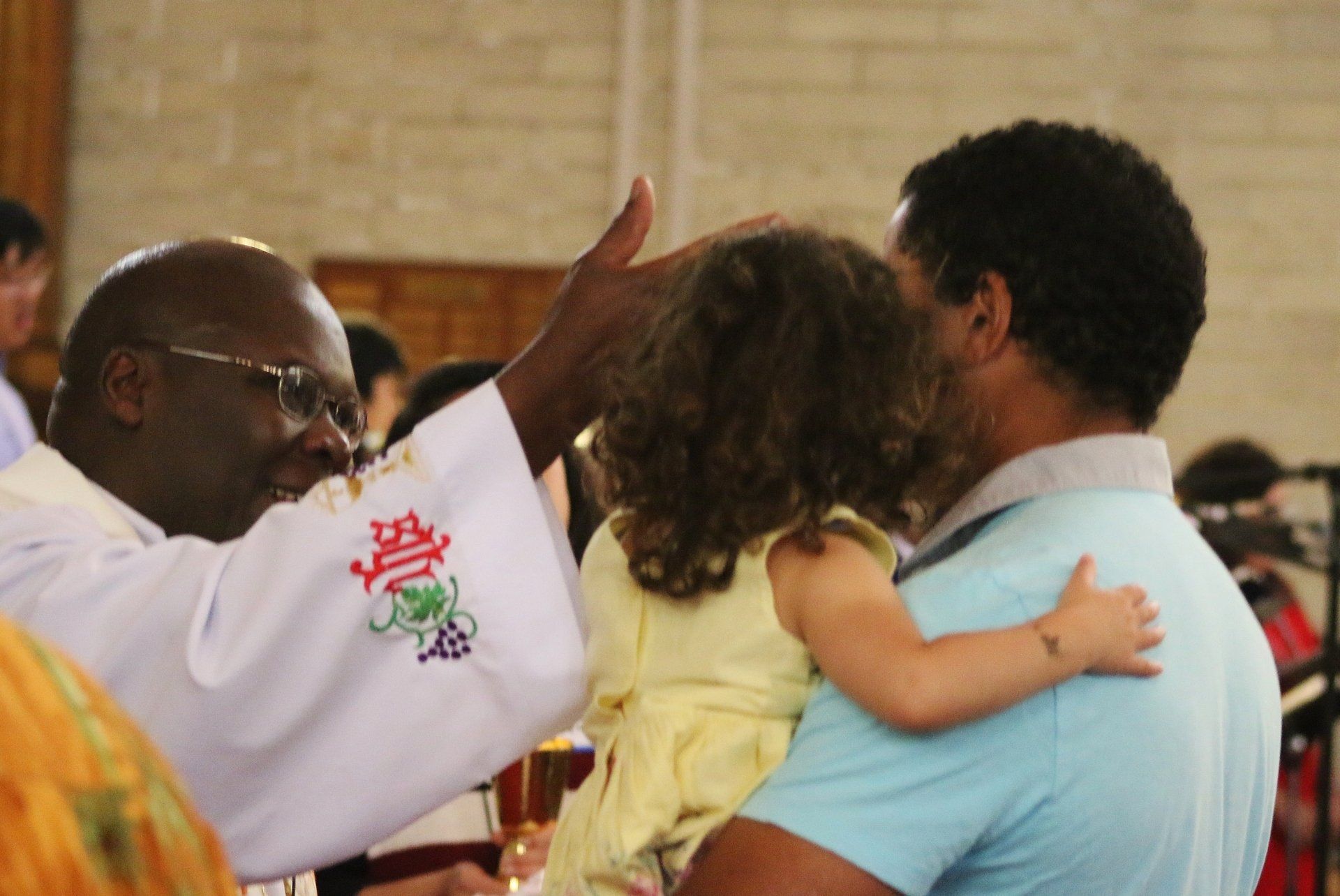Teaching Mass Saint Thomas More Parish – October 17/18, 2020-December 5, 2020
Teaching Mass Series
THE YEAR OF THE EUCHARIST
- written by John Kennedy in collaboration with the Parish Staff
Our Archbishop has asked us to make every effort during this Year of the Eucharist to deepen our understanding and appreciation of the gift of the Mass. Here at Saint Thomas More, we are focusing on one part of the liturgy each week.
The Introductory Rites
Today, we highlight the Introductory Rites, the very first things we do when we come together as a community of faith. Throughout the entire first part of the Mass, we are standing. It is a gesture of we use to show our attention and respect.
From all four directions of the parish, we have driven or walked to gather as one family to renew the mystery of Christ’s saving action in our lives. We join with Christ in the work of our salvation. Everyone is encouraged to arrive early enough to be present for the very beginning of our prayer each week.
The procession expresses that we are all coming together, our priest included. We join each other in our Entrance Song and joyfully sing about the reason for our coming together - who we are, and why we are here. Whether one is a good singer or not, joining in with a prayerful heart is what matters.
Our priest, who presides with us, then welcomes us and acknowledges our presence and that we come to pray with one another. We have become accustomed to Father’s greeting of “Jambo” which is “Hello” in his native Swahili. “God is good” to which we reply “All the time”. “All the time, God is good. And that is His nature. Wow!”
We then bless ourselves with the Sign of the Cross, remembering that Jesus united both heaven and earth by the sacrifice of his life on the Cross. We are mindful that we are one with the Trinity, the Father, the Son, and the Holy Spirit. It is good to remember that can bless ourselves and each other at any time and any place, whether in church, in our family, or in our busy lives. It is interesting to note that even the priest celebrant blesses himself, as we all acknowledge together why we are here.
Next, as a sign that we wish to be worthy to enter into our prayer as a family of faith, we are asked to reflect on our lives and to acknowledge any need we have to ask the Lord’s forgiveness for any of our faults and failings, any ways we have not lived up to our calling to be true disciples of Jesus Christ.
When we have completed this prayer of mercy, reconciliation, and forgiveness, we join in giving glory to God in both praise and thanksgiving for all that God has done for us, and continues to do.
Finally, our time of Preparation is summed up in the prayer called the Collect. It is just that. It helps us to collect our thoughts, focus our attention on what we are doing and the purpose of our prayer this day. It is significant that this prayer always ends with “through Christ our Lord”. And we wholeheartedly respond “Amen” which means “I believe” or “I agree”.
The Liturgy of the Word
Today we highlight the Liturgy of the Word. After we have gathered and celebrated the Introductory Rite of the Mass, we are seated to hear Word of God. God speaks to us, opening to us the mystery of our salvation.
Being seated is a posture of being taught and of giving our attention. The lessons read each weekend are always different. It takes three years before we hear any lesson repeated.
The first lesson is always from the Old Testament, often referred to as the Hebrew Scripture. The Old Testament begins with the Book of Genesis and ends before the Birth of Christ. In the Old Testament, our salvation is traced from the beginning of creation, through chosen leaders such as Moses, and the Prophets such as Jeremiah, Isaiah, and Ezekiel. Through times of challenge and pain; success and failure; wanderings and exile; grace and rescue, the promise of our Messiah is foretold.
We listen and reflect as Christ is in our midst through this history. When we are reminded by the Lector that what we have heard is “The Word of the Lord”, with grateful hearts and enthusiasm we respond “Thanks be to God”.
This first lesson is always followed by the singing or recitation of one of the 150 Psalms from the Old Testament. Most were written by David, the King of Israel, and the rest by other inspired writers. They wrote them to glorify God’s faithfulness and protection. We sing them to echo their prayer.
Following the responsorial psalm comes the second lesson which is always from the New Testament. These lessons tell us about the life of the early Christian community and are full of instructions and reminders about our call to be disciples of Jesus. They remind us of the challenges of following Christ and the need to persevere with faith, hope, and love.
After this second lesson comes the Proclamation or announcement of the Gospel, the Good News. We stand to express our love and reverence for the person of Jesus as we remember His life, teaching, and miracles. The Book of the Gospels is carried in procession from the altar to the ambo. As Father announces the Gospel we say “Praise to you Lord Jesus Christ”. And we trace a small cross on our foreheads, our lips and over our hearts. By doing this we express our hope that the Sacred Word of the Gospel will enlighten our minds, be reflected in the words of our mouths, and carried in our hearts to be lived and shared. We are called to be Gospel people.
After the Gospel reading, we are seated once again so that our priest can share a homily with us. A homily is always a reflection on the Scripture we have just heard. Just as the Word of God is living and dynamic, so a homily is meant to help us live better Christian lives and carry the lessons we have learned into our everyday lives throughout the week to come. Following the homily, it is appropriate to take a few moments of silence to prayerfully reflect on all we have heard.
The Creed and the Prayers of the Faithful
Today we will focus on the Creed and the Prayers of the Faithful. When we reach this point of the Mass, we are completing the Liturgy of the Word, the first half of the Mass.
We have gathered as a community; we have listened to God’s Word through two lessons and the Gospel. And we have listened to a homily. We are now ready to profess our belief in what we have heard.
The word Creed comes from the Latin word which means “I believe”. The profession of our belief begins with God, the Father, the first divine person of the Holy Trinity. All of creation, both in heaven and on earth, comes from God. We profess the Nicene Creed every Sunday, a statement of our belief adopted at the Council of Nicea in the year 325 A.D. During the Easter Season, our Creed takes the form of the renewal of our Baptism promises.
When we say that Jesus is “consubstantial with the Father”, we mean that Jesus as the Son is one with the Father in every way. In the mystery of the Trinity They are united with the Holy Spirit, in the mystery of the Trinity, three persons in one God.
We profess that Jesus Christ is divine and that He became human for our salvation. His life, death, and resurrection are at the heart of our lives as people of faith. To acknowledge this sacred gift, when we say that “he came down from heaven and by the Holy Spirit was incarnate of the Virgin Mary, and became man”, we bow our heads.
We also confess one Baptism for the forgiveness of sin. With the Church, we believe that all Baptisms that are validly administered bring with their blessing the forgiveness of all sin for all who receive this sacrament. Once baptized, one cannot be baptized again. For this reason, one who wishes to become part of the Catholic Church community is not re-baptized but instead is welcomed into the Church with a profession of faith.
We believe in our One, Holy, Catholic, and Apostolic Church. The word catholic means universal. And, as with all prayers, the Creed ends with our “Amen”, “I believe”.
This Creed is followed by the Prayers of the Faithful, last prayers of the Liturgy of the Word. These prayers are more properly called the Universal Prayers or the General Intercessions. They are meant to be just this, prayers for the whole Church, for the community of which we are just one part. And we pray for all of God’s people. And the needs of our world.
We pray for the Holy Father and for all who lead the Church. We pray for those who serve us in public office. And we do our best to include all people who are poor or in need; the men and women who are bravely protecting us in military service; and people suffering illness or the threat of harm in any way.
These Universal Prayers bring us to the end the Liturgy of the Word. We then prepare for the Liturgy of the Eucharist.
The Eucharistic Prayer
This week we focus on the Liturgy of the Eucharist. The word Eucharist means thanksgiving.
As we prepare for this second part of the Mass, we are seated for a few minutes as our gifts and altar table are prepared. The gifts of bread and wine which will be blessed and transformed for us into the sacred Body and Blood of our Lord are our first gifts. And with these gifts come our financial offerings. Our monetary offerings are not only are a sign and symbol of the fruits of our labor and stewardship; they are also a sacrifice of a portion of what we could keep but instead give generously for the work of the Church. All these gifts we offer back to God, knowing in faith that God will renew his life in us again. Our priest receives these gifts and takes them to the altar. These actions are accompanied with joyful song.
As a sign that our celebrant wants our prayer and offering to be pure and unblemished before God, he washes his hands and prays that he might be worthy to pray on our behalf. We respond “May the Lord accept the sacrifice at your hands for the praise and glory of His name, for our good and the good of all His holy Church”.
We then stand for the prayer that leads us into the heart of our Mass. Father asks us to lift up our hearts and we acknowledge that it is only right and just that we thank our God. This prayer ends with a heartfelt “Holy, Holy, Holy”.
And, then, for the very first time since we gathered for our prayer, we kneel. This posture expresses our reverence and adoration; our humility before our God; and our acknowledgement of the sacredness and seriousness of the next prayers. It is truly a wonderful mystery that is about to be renewed again.
Father raises his hands and prays that the Holy Spirit will come down upon our simple gifts and transform them through their consecration into the true presence of Christ with us. Jesus Himself told us that this is His Body and His Blood given for us, to do it in memory of Him. Each Sunday is a “Little Easter”, a recalling of the death and resurrection of Jesus, until he comes again.
As we remain kneeling, Father prays that we too can be transformed and filled again with the Holy Spirit. We remember that we are united with not only the whole Church throughout the world but also with the Communion of the Saints in heaven with and all of our departed loved ones. The names the Blessed Mother and some of the saints are mentioned, including our patron Thomas More. Our earthly community is united with them as the names of the Pope and our bishops, the clergy, and all of us the faithful are included.
Our whole Eucharistic prayer is then brought together in the sacred presence of Jesus when Father says “Through him, and with him, and in him, in the unity of the Holy Spirit, all glory and honor is yours almighty God, forever and ever. And we stand and join in the Great Amen, which again means “I believe”.
Communion and the Breaking of the Bread
This week we focus on Communion and the Breaking of the Bread.
Following the Great Amen, which is often sung, we stand together to begin our preparation for the reception of the Eucharist in Holy Communion. We pray that we may be in communion with the Holy Trinity, with the same anticipation and enthusiasm of our very first Holy Communion.
Jesus invites us to pray as he prayed, and we are invited to say OUR Father. We pray for the coming of the Kingdom and the grace to conform our lives to the divine will. Heaven is revealed to us as a place we are destined to be, and where we are now in spirit. The daily bread for which we pray is our spiritual food for the journey of faith.
And then something happens for the very first time in the Mass. Up to now, our priest celebrant has either addressed us or he has directed his prayer to the Father. But now, in the Eucharistic presence of Jesus, the Son of God, Father prays:
“Deliver us, Lord, from every evil and grant us peace in our days. By the help of your mercy, may we always be free from sin and safe from all distress, as we await the coming of our Savior”.
We agree by responding “For the Kingdom, the power, and the glory are yours forever and ever”
There is a natural response to all the prayers we have just offered. Father prays “May the peace of the Lord be with you always”. And we wish him the same “And also with you”.
It is so important that we be united as a family of faith as we prepare for Communion, and so we extend the wish for peace to those around us. And then we turn towards the altar again. Father breaks a piece from the Host and drops it into the Chalice and prays “May this mingling of the Body and Blood of our Lord Jesus Christ bring eternal life to us who receive it”.
And we address Jesus as the Lamb of God, the pure sacrifice the Father made for us by giving us His only Son. Lamb of God, have mercy on us. Lamb of God, have mercy on us. Lamb of God, grant us peace.
We have been standing since the end of the Eucharistic prayer but now we kneel again. Our Archbishop has instructed all of us, the People of God in the Archdiocese of Seattle, to make this small change. This kneeling posture reminds us that it is a sacred and special moment that we are about the experience. We prepare ourselves prayerfully as we wait to be invited to stand and join the procession of the assembly to the altar. We pray “Lord, I am not worthy that you should enter under my roof, but only say the word and my soul shall be healed.” We approach the Minister of Communion and bow our heads slightly. We extend our hands as we hear “The Body of Christ” and then “The Blood of Christ”. Before our reception of Jesus, we respond “Amen” which, as we have been reminded many times now, means “I believe”.
In our reception of the Lord’s Body and Blood, our own bodies become the place on earth where the will of the Father is done for we are joined to Christ. When we return to our place, we may either kneel or be seated in a prayerful attitude of thanksgiving.
Post Communion and Dismissal Rites
This week we focus on the Post Communion and Dismissal Rite of the Mass.
When we stand after Communion to conclude our liturgy, what happens next is so important. We have opened our hearts to the Living Word of God, and we have been spiritually nourished by the Bread of Life, the very life of Jesus in us.
And because we are a people of faith and because we are disciples of the Lord Jesus, we are now called to go out and share who we are with the people and world beyond our assembly here.
The end of every Mass is much like a commissioning ceremony, a sending forth. And so we bow our heads and are blessed by the spiritual leader of our community.
One of the most beautiful prayers that Father has the option of saying is “The Mass is ended. Go in peace, glorifying the Lord by your life.” And we respond “Thanks be to God."
And, just as we gathered in song as we came together as a worshiping community, we now join in song as we go our separate ways. We return to our homes and to the work of our daily lives.
Today is the seventh Sunday on which we have focused on the various parts of the Mass. Our hope is that we have been enriched by a deeper understanding and appreciation of the gift of the Mass in this the Year of the Eucharist in the Archdiocese of Seattle.
When we have the joy of returning to our newly-renovated church for worship, we pray that we will do so with full and active participation. You are invited to make that participation even more personal by possibly answering the call to serve as a lector, a Eucharistic Minister, a choir member, usher, or altar server. God bless our Saint Thomas More Parish, all of us and our families; and all those who live in this area of Lynwood. May others be drawn closer to Christ by the love and example of our lives.
